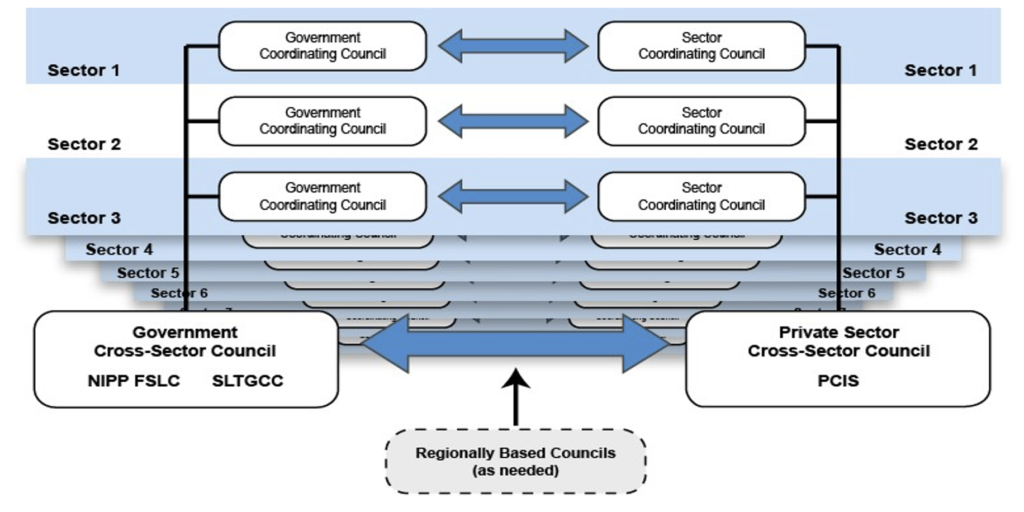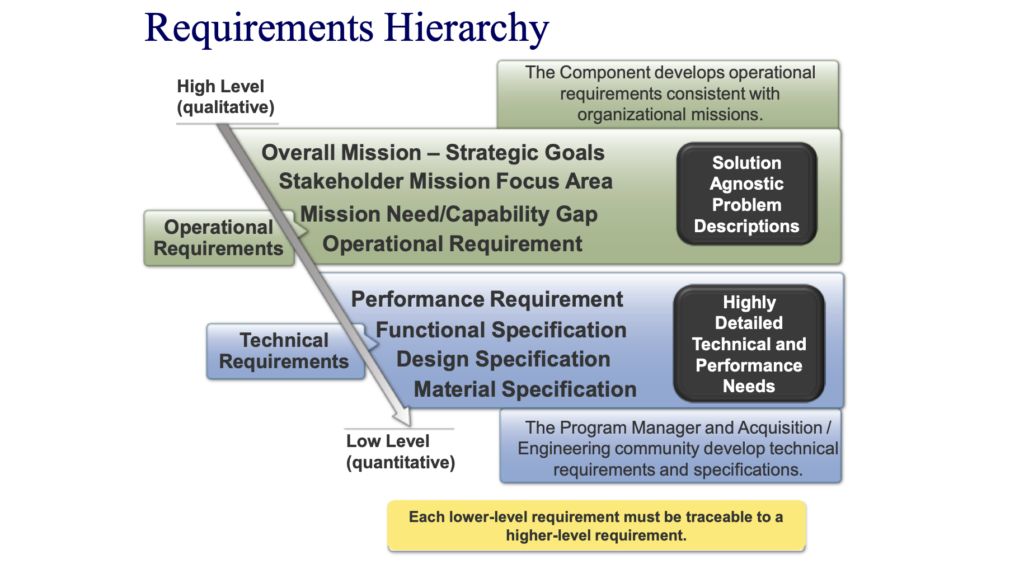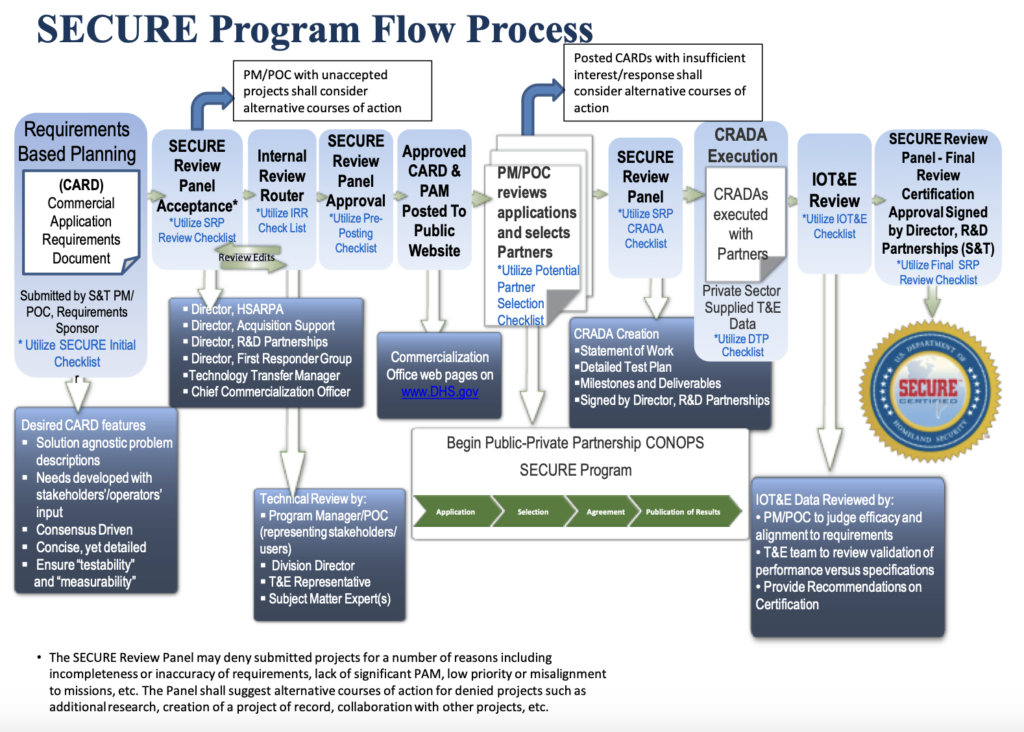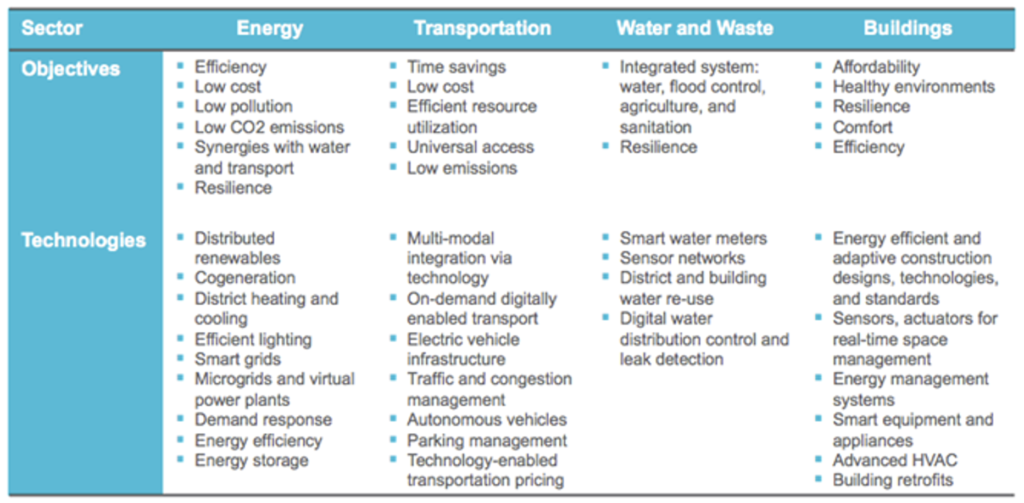If you’re involved in business development, you are already putting together a plan to grab some of the billions upon billions of dollars of business opportunities supposedly afforded by the recovery of Ukraine. While there will be undoubtedly money expended on large programs and efforts, Ukrainian officials will be looking to replicate some of the programs initiated and tested in the United States, to both save money and execute rapidly. It should be obvious upon completion of this article that programs like SECURE, which are now popping up (used by many agencies across government with different names) throughout the US Government was an ideal process for leveraging the potential available market represented by users of products and services germane to communities across the United States. And we’re proud to say we have been helping officials in Ukraine prepare how to rapidly deploy such programs for the onslaught of sales and marketing people ready to “sell them stuff”.
The real challenge for the national, state and local government officials in Ukraine is to work as a group to prioritize and articulate the unsatisfied needs/wants of their particular regions—and include in these requirements the important ingredients for success—like proven experience in Ukraine, working in the Ukrainian environment with Western standards related to all business dealings that the US and other supporters will require who may help fund this massive effort. DHS, through utilization of its SECURE program, had aided several state and local government officials by developing detailed operational requirements, concepts-of-operations and a conservative estimate of the potential available market (PAM) for products/services needed collectively by communities at the local, tribal, state and federal levels.
A Case Study: US Department of Homeland Security’s Interaction with the CIKR Community
NPPD oversees the coordinated operational and policy functions of the Directorate’s subcomponents – Cyber Security and Communications (CS&C), Infrastructure Protection (IP), Risk Management and Analysis (RMA), and the United States Visitor and Immigrant Status Indicator Technology (US-VISIT) program – in support of the Department’s critical mission.
IP leads the coordinated national program to reduce risks to the nation’s CIKR posed by acts of terrorism and to strengthen national preparedness, timely response, and rapid recovery in the event of an attack, natural disaster, or other emergency.
National Infrastructure Protection Plan and the Public-Private Partnership Model
The National Infrastructure Protection Plan (NIPP) was created to codify the nation’s action plan to provide for CIKR resiliency, protection, and preparedness. The CIKR Support Annex to the National Response Framework (NRF) provides a bridge between the NIPP “steady-state” processes for infrastructure protection and the NRF unified approach to domestic incident management. The ways in which CIKR are interrelated creates additional challenges from cascading effects in the event of a disruption to sectors of CIKR.
Critical infrastructure protection is a shared responsibility among national, state, local and tribal governments and the owners and operators of Ukraine’s CIKR.

The NIPP Partnership Model basically provides a forum through which the diverse community of infrastructure protection providers can collaborate and share information to discuss requirements identification, planning and policy coordination.

Under the NIPP, a Sector-Specific Agency (SSAs) is the assigned federal agency to lead a collaborative process for infrastructure protection for each of the eighteen sectors. More importantly, the NIPP framework integrates a broad range of CIKR public and private protection activities.
The SSAs provide guidance about the NIPP framework to state, territorial, tribal and local homeland security agencies and personnel. The sectors for which IP serves as the SSA are italicized:


An important facet of these sectors is the creation of Cross-Sector Councils. Optimally, potential partners/vendors will have had extensive experience working in Ukraine previously—as there will not be time for a “crash course” in learning the landscape and cultural aspects of the reasons for many detailed operational requirements.
Working through these sectors, IP assists NIPP stakeholders in identification and articulation of strategic R&D needs. IP oversees the collection, distribution and prioritization of sector requirements for all eighteen sectors.
These sectors play a critical role in the understanding of capability gaps and requirements experienced by the CIKR owners and operators. This direct interaction between the Government Coordinating Council (GCC) and Sector Coordinating Council (SCC) provides opportunities for these groups to develop a common understanding of current challenges facing the sectors.
Private-Public Partnerships ARE the Future Salvation for Ukraine’s Recovery…
A public-private partnership is an agreement between a public agency and a private sector entity that combines skills and resources to develop a technology, product and/or service that improves the quality of life for the general public. The private sector has been called upon numerous times to use its resources, skills and expertise to perform specific tasks in support of the public sector. Historically, the public sector has frequently taken an active role in spurring technological advances by directly funding the private sector to fulfill a specialized need that the public sector cannot complete itself. In these cases, the public sector relied on the private sector to develop mission-critical capabilities, but had to pay the private sector to divert its valuable (and limited) resources to an area that did not necessarily show a strong potential to provide an acceptable return-on-investment (ROI) for a given company.
Increasingly, however, users in the public sector are now viewed as stable markets – i.e., a sizeable enough customer base for the private sector to warrant investments of time and money. The introduction of a commercialization-based public-private partnership, developed and implemented at DHS, provides benefits for three constituents of the Homeland Security Enterprise (HSE): the private sector, the public sector and the taxpayer. The public sector is not only the “consumer” in this free market scenario, but an informed and communicative consumer who is capable of giving the private sector a detailed description of what they need, as well as insight into which agencies and user communities would be interested in potentially purchasing a product/service that fulfills these requirements. While it remains prudent business to verify the information provided by the public sector, there is considerable value for the private sector to obtain these details from DHS because four things are provided to the private sector that would not happen in normal market dynamics: 1) a decrease in resources spent researching the market; Note that each lower level requirement stems directly from its higher requirement so that all requirements are traceable to the Overall Mission.
In this partnership model, the proactive articulation and sharing of requirements or needs provides the necessary starting point to begin effective communication with potential private sector partners.

US Department of Homeland Security and Most US Government Agencies Now Leverage Public-Private Partnerships…
These stakeholders were used to a culture where vendors present “solutions looking for problems” and wanted to find a better way to not only have solutions developed to address their needs, but also to have some assurance that the products being sold to them have been thoroughly tested and evaluated in real operational environments.
The SECURE Program is an efficient and cost-effective program to foster cooperative “win-win” partnerships between DHS and the private sector.
Private sector entities possessing technologies or products that are at Technology Readiness Level (TRL) 5 or above that are aligned to these posted requirements can use this valuable information to generate a business case and develop (at their cost) a fully deployable product or service after their study and verification of a given solution’s market potential. The Department assures that a TRL-9 or fully deployable product or service has demonstrated operational performance that meets a given private sector entity’s published specifications through the public sector’s review of recognized third-party independent testing data to eventually certify a product or service. This enables the private sector, through the free market system, to develop products and services that capture significant revenue opportunities and demonstrates to potential purchasers that the product does what it claims to do.
The success of the SECURE program is the result of effective communication and fostering cooperative relationships that focus on measurable results.

When DHS publishes approved CARDs and PAMs, the private sector is able to take advantage of this valuable information to develop potential solutions by entering into a partnership with DHS. The SECURE program utilizes this vital evaluation criteria to incorporate a rigorous review process based on OT&E of potential solutions to ensure that the operational performance of a system is not only directly aligned to stated stakeholder requirements, but also that the system meets or exceeds the stated performance of the private sector vendor or supplier. DHS provides all of its stakeholders with the tools and information needed to make informed purchasing decisions on quality solutions that fill their exact requirements giving the needed assurance to the first responder and CIKR communities that a certified product or service works as specified and is aligned to a requirements document.
Products developed through this partnership (even those not eventually purchased by DHS) can be offered to other private sector entities, found for example in the airport security arena, school and university security segments, and security space for professional sports and concerts, many of whom support the defense of critical infrastructure and key resources nation-wide.
Understanding the DHS Market as an Example…
We have seen through the SECURE program that the US Federal Government can engage and influence – in a positive way – the private sector by offering detailed requirements and conservative estimates of market potential. Firms spend significant resources in trying to understand market needs and market potential through their business and market development efforts. By offering this open and transparent information, government saves the private sector both time and money while demonstrating its genuine desire to work cooperatively to develop technologies and products to meet DHS stakeholders’ needs in a cost-effective and efficient way that benefits the private and public sectors – but also, most importantly, to the American taxpayers’ benefit.

With more knowledge about the needs and requirements of their potential customers, the private sector is in a better position to consider how their current offerings align to needed capabilities. Just as consumer products are developed with a variety of options (at varying price points), a detailed requirements document could outline all the options required by agencies through a “requirements platform.”
The SECURE program covers the needs of all of the DHS stakeholders including the operating components (FEMA, TSA, CBP, Secret Service, ICE, USCIS and Coast Guard), but most especially first responders (local police and fire department, hospitals, rescue teams) and critical infrastructure/key resources (CIKR) owners and operators, representing a large market for potential private sector partners. Because the SECURE program is not a procurement activity, DHS is able to share valuable information about its non-federal stakeholders to the private sector and gain knowledge about potential solutions without the need for contracts or monetary exchanges. By sharing information about the requirements or needs of an identified market openly, multiple companies may make products/services that meet requirements, while competitive market forces impact price points to achieve the lowest cost to the potential buyer.
The taxpayer wins in a commercialization-based public-private partnership because their tax money is not spent on research and development that could be accomplished by the private sector. It is the private-sector that invests its own money on research and development, and then sells the product to the government at the lowest price.
| Benefit Analysis – “Win-Win-Win” | ||
| Taxpayers | Public Sector | Private Sector |
| 1. Citizens are better protected by DHS personnel using mission critical products | 1. Improved understanding and communication of needs | 1. Save significant time and money on market and business development activities |
| 2. Tax savings realized through private sector investment in DHS | 2. Cost-effective and rapid product development process saves resources | 2. Firms can genuinely contribute to the security of the Nation |
| 3. Positive economic growth for American economy | 3. Monies can be allocated to perform greater number of essential tasks | 3. Successful products share in the “imprimatur of DHS”; providing assurance that products really work |
| 4. Possible product “spin-offs” can aid other commercial markets | 4. End users receive products aligned to specific needs | 4. Significant business opportunities with sizeable DHS and DHS ancillary markets |
| 5. Customers ultimately benefit from COTS produced within the Free Market System – more cost effective and efficient product development | 5. End users can make informed purchasing decisions with tight budgets | 5. Commercialization opportunities for small, medium and large business |
Table 1. The benefits of commercialization-based public-private partnerships are evident for all participants.
Innovative ideas flow freely in the private sector, most especially from small businesses. There is a demand for these innovative technologies as other private sector companies begin to position themselves to address these newly emerging commercial markets. Mergers and acquisitions continue to take place in the private sector as larger companies and investors seek to build their enterprises.
Establishing the Partnership…
Though the private sector participant may fund portions of the effort, the government agency cannot use federal funds (i.e., cash) to support the private sector directly. 2) the government agency and the private sector participants can negotiate on intellectual property disposition, such as rights to patents, the protection of information, and exclusive or non-exclusive licensing of inventions or other intellectual properties developed that are made through the agreement; 3) the government agency and the private sector participants have the opportunity to develop work and business relationships.
Agency and private participants define a project that would benefit both sectors.
Commercialization of Technology Provides the Key…
Technology in and of itself is not of value—but commercialized technology meeting requirements of the CIKR community or enabling technology to protect CIKR is paramount to enabling the secure and safe operation of our economy…Below is a non-exhaustive list (see Table 2) of example technologies well-suited for protection of our valuable CIKR. For example, detection of drugs at ultra-low levels significantly below those currently detected by state-of-the-art instrument systems analyzing swipe samples could enable vapor detection, that would compete with a detection acuity on the order of sniffing dogs.

Once again, it is the partnership between the private sector and government that will lead to the timely execution or deployment of technology to meet CIKR’s needs.
For example, one of us (TC) was affiliated with a firm that plans to commercialize technology developed by the US Government that has the potential to detect trace amounts of explosives, illegal narcotics and chemical gases with high accuracy at minut levels—providing a “holy grail” solution to a vexing problem plaguing both government and the private sector.
Transformational Change beyond DHS…
Because of its obvious benefits, it is reasonable to examine the possibility of extending the concepts developed at DHS to other global national, state, local and tribal agencies. Logic dictates that in cases where operational requirements can be developed across agencies, the size of a given potential available market would increase. Further expanding requirements generation and collecting information on market potential across all of government can have transformative effects on the way government conducts business.
Communities of Practitioners and Dual-Use Technologies
The prevalence of global and/or national associations for various stakeholder communities drives the creation of a significant amount of information relative to the challenges, needs and requirements of their representative membership. The answer is simple: It has already begun in the US… DHS is planning to utilize deployable technology to create a Community of Practitioners (CoP) in order to gather and communicate requirements across such a large-scale community of users. In addition, CoPs will enhance connections between personnel in a number of mission-spaces who may find similarities in capability gaps or share information on best-practices and possible standards that can facilitate coordinated responses to incidents involving users from a number of jurisdictions.
Uncovering common requirements across stakeholder communities highlights the connections between ancillary markets and the possibility for a given technology to work in varied applications. It follows that addressing additional markets increases the potential benefits to solution providers who can distribute their company’s capabilities to a wider audience, increasing sales volumes and driving prices down for consumers as economies of scale are improved.
Summary
Ukraine has the opportunity to be proactive in addressing its many needs through creating an environment conducive to partnerships with the private sector. The public sector will continue to identify areas in which partnerships can provide the best situation to solve a problem efficiently, effectively– all with a speed-of-execution necessary to provide critical protections to the American people and their way of life.
Acknowledgements
This article would not have been possible without the steadfast assistance of our former and current colleagues in Ukraine, the White House, and the US Department of Homeland Security.
The views expressed here are the writers’ and are not necessarily endorsed by Homeland Security Today, which welcomes a broad range of viewpoints in support of securing our homeland. To submit a piece for consideration, email editor @ hstoday.us.
Bibliography
Brooks, C., “3 Key Areas Where Nanotechnology Is Impacting Our Future”, Forbes Magazine (May 3, 2022). Note: Cellucci is highlighted as a preeminent and early force in nanotechnology in the USA.
Cellucci, T., “Creating R&D Partnerships in Government: A Case Study of How Government can Leverage the Resources of the Private Sector to Accelerate Commercialization”, Amazon Publishing, 386 pp (January 2023).
Cellucci, T. et al, “Commercialization at the University Level: A Case Study”, Amazon Publishing, 472 pp., (December 2022).
Cellucci. T.A. and Matt ice, L., “Buyer and User Beware: The UAS You’re Using Could Be Spying on You”, Homeland Security Today Magazine (March 3, 2020).
Cellucci, T.A., “Q&A with Tom Cellucci: How to Build Security through Critical Infrastructure Partnerships”, Homeland Security Today Magazine (February 28, 2020).
Cellucci, T.A. et al, “Homeland Security Experts on the Biggest Threats and Challenges Facing the U.S. in 2020”, Homeland Security Today Magazine (January 28, 2020).
Cellucci, Thomas A., “A Guide to Innovative Public-Private Partnerships-Utilizing the Private Sector for the Public Good”, Scarecrow Press, 436 pages, 2011 and Critical Infrastructure & Key Resources (CIKR) Development: Using Commercialization to Develop Solutions Efficiently and Effectively, Kindle Edition, 2017
Cellucci, Thomas A. and Grove, James W., Jr. “Leveraging Public-Private Partnership Models and the Free-Market System to Increase the Speed-of-Execution of High-Impact Solutions throughout State and Local Governments”, U.S. Department of Homeland Security, August 2011. [Available online: http://www.dhs.gov/xlibrary/assets/st-leveraging-partnerships-for-state-and-local-governments-August2011.pdf].
Cellucci, Thomas A. “Commercialization Office: Offering Transformational Change beyond DHS”, US Department of Homeland Security, June 2009.
Cellucci, Thomas A. “Commercialization Office: Providing Value through Efficiency and Cost – Effectiveness”, US Department of Homeland Security, April 2009.
Cellucci, Thomas A. “Commercialization: The First Responders’ Best Friend” US Department of Homeland Security, January 2009. [Available online: http://www.dhs.gov/xlibrary/assets/st_first_responder_commercialization_article.pdf].
Cellucci, Thomas A. “Conservative Estimates of Potential Available Market(s)”, US Department of Homeland Security, December 2008. [Available online: http://www.dhs.gov/xlibrary/assets/st_potential_available_market_final.pdf].
Cellucci, Thomas A. “Creating and Demonstrating Value”, US Department of Homeland Security, 2009 [Available online: http://www.dhs.gov/xlibrary/assets/st_why_a_commercialization_office_creating_and_demonstrating_value.pdf].
Cellucci, Thomas A. “Creating Change to Drive Results: A Journey into Creating a ‘Commercialization Mindset’ at DHS”, US Department of Homeland Security, April 2009.
Cellucci, Thomas A. “DHS Implements Commercialization Process”, US Department of Homeland Security, August 2008. [Available online: http://www.dhs.gov/xlibrary/assets/DHS_Commercialization.pdf].
Cellucci, Thomas A. “DHS Makes Transition from Acquisition to Commercialization”, US Department of Homeland Security, August 2008.
Cellucci, Thomas A. “DHS: Leading the Way to Help the Private Sector Help Itself”, US Department of Homeland Security, February 2009. [Available online: http://www.dhs.gov/xlibrary/assets/st_critical_infrastructure_key_resources_article.pdf].
Cellucci, Thomas A. “Focus on Small Business: Opportunities Abound for the Engines of Innovation”, US Department of Homeland Security, March 2009. [Available online: http://www.dhs.gov/xlibrary/assets/st_focus_on_small_business.pdf].
Cellucci, Thomas A. “FutureTECH: Guidance to Understanding Future DHS S&T Critical Research/Innovation Focus Areas”, US Department of Homeland Security, April 2009.
Cellucci, Thomas A. “FutureTECH Program Swim Lane Chart”, US Department of Homeland Security, June 2010.
Cellucci, Thomas A. “FutureTECH Program: Public-Private Technology Certification Process”, US Department of Homeland Security, June 2010.
Cellucci, Thomas A. “FutureTECH Program: Roles and Responsibilities”, US Department of Homeland Security, June 2010.
Cellucci, Thomas A. “Innovative Commercialization Process delivers Cost-Effective and Efficient Product Development at DHS with Unparalleled Speed-of-Execution”, US Department of Homeland Security, November 2008.
Cellucci, Thomas A. “Innovative New Partnership Program creates ‘Wins’ for Taxpayers and the Private & Public Sectors”, US Department of Homeland Security, September 2008.
Cellucci, Thomas A. “Making it Easier to Work with DHS: The Critical Role of Detailed Operational Requirements”, US Department of Homeland Security, September 2008. [Available online: http://www.dhs.gov/xlibrary/assets/making_it_easier_to_work_with_dhs.pdf].
Cellucci, Thomas A. “Opportunities for the Private Sector”, US Department of Homeland Security, May 2009 [Available online: http://www.dhs.gov/xlibrary/assets/st_opportunities_for_the_private_sector.pdf].
Cellucci, Thomas A. “Partnership Program Benefits Taxpayers as well as Private and Public Sectors”, US Department of Homeland Security, September 2008. [Available online: http://www.dhs.gov/xlibrary/assets/Partnership_Program_Benefits_Tax_Payers_Public_and_Private_Sector.pdf].
Cellucci, Thomas A. “Product Realization Chart”, US Department of Homeland Security, March 2008. [Available online: http://www.dhs.gov/xlibrary/assets/st_product_realization_chart_version_1-4.pdf].
Cellucci, Thomas A. “Program Prioritization Index”, US Department of Homeland Security, August 2010. [Available online: http://www.dhs.gov/xlibrary/assets/sandt-program-prioritization-index-august-2010.pdf].
Cellucci, Thomas A. “SECURE Program: Public-Private Product Certification Process”, US Department of Homeland Security, June 2010.
Cellucci, Thomas A. Requirements Development Guide, US Department of Homeland Security, April 2008.
Defense Acquisition University. “Manufacturing Readiness Assessment (MRA) Desk book.” May 2009. [Available online: https://acc.dau.mil/CommunityBrowser.aspx?id=182129].
Defense Acquisition University. “Technology Readiness Assessment (TRA) Desk book.” July 2009. [Available online: https://acc.dau.mil/CommunityBrowser.aspx?id=18545].
Defense Acquisition University. “TRL Calculator.” [Available online: https://acc.dau.mil/CommunityBrowser.aspx?id=25811 ].
Derby, Esther. “Building a Requirements Foundation through Customer Interviews.” Amplifying YourEffectiveness,2004. [Available online at:http://www.ayeconference.com/buildingreqtsfoundation/].
Duisebayev, B., Polinovsky, K., and Cellucci, T., “Innovative Technologies for Preventing Both a Sulfur and Phosphorus Crisis”, HS Today Magazine (January 2023).
Francis, Samuel. “Acquisition and Commercialization: How DHS Develops End-User Capabilities”, US Department of Homeland Security, April 2009.
Graham, Ian. Requirements Engineering and Rapid Development: An Object-Oriented Approach. Addison-Wesley Professional. 1999.
Japenga, Robert. “How to Write a Software Requirements Specification.” Micro Tools, Inc. 2003. [Available online: http://www.microtoolsinc.com/Howsrs.php].
Kar, Pradip and Bailey, Michelle. “Characteristics of Good Requirements,” International Council of Systems Engineers, Requirements Working Group: INCOSE Symposium. 1996. [Available online: http://www.afis.fr/nav/gt/ie/doc/Articles/CHARACTE.HTM].
Kiel, Todd and Cellucci, Thomas A. Critical Infrastructure & Key Resources: Using Commercialization to Develop Solutions Efficiently and Effectively, US Department of Homeland Security, January 2010. [Available online: http://www.dhs.gov/xlibrary/assets/st_cikr_requirements_book_jan_2010.pdf].
Kotonya, G. and I. Sommerville. Requirements Engineering: Processes and Techniques. John Wiley & Sons, 1998.Madden, Scott Management Consultant “Smart City Opportunity for Utilities” May 2017
Margetta, R. “S&T Official Working to Move Product Development Out of DHS, Into Private Sector.” Congressional Quarterly Homeland Security. June 27, 2008.
Medalye, Jacqueline. “Support and Opposition of Public-private Partnerships.” Encyclopedia of Earth. November 2006. [Available online: http://www.eoearth.org/article/Support_and_opposition_of_public-private_partnerships].
Sehlhorst, Scott. “Ten Requirements Gathering Techniques.” Tyner Blain. November 21, 2006. [Available online: http://tynerblain.com/blog/2006/11/21/ten-requirements-gathering-techniques/].
Smith, Douglas A. and Cellucci, Thomas A. Harnessing the Valuable Experience and Resources of the Private Sector for the Public Good: Innovative Public-Private Partnerships, US Department of Homeland Security, June 2010 [Available online: http://www.dhs.gov/xlibrary/assets/st_harnessing_the_value_of_the_private_sector2.pdf].
US Department of Homeland Security. “Essential Technology Task Force: Homeland Security Advisory Council,” June 2008. [Available online: http://www.dhs.gov/xlibrary/assets/hsac_dhs_ettf_report_update.pdf].
US Department of Homeland Security: Science & Technology Directorate. “High-Priority Technology Needs.” May 2009. [Available online: http://www.dhs.gov/xlibrary/assets/High_Priority_Technology_Needs.pdf].
US Department of the Interior. “What Is a CRADA?” [Available online: http://www.usbr.gov/research/tech-transfer/crada/whatcrada.html].
Ward, James. “It Is Still the Requirements: Getting Software Requirements Right.” Sticky Minds. June 7, 2005. [Available online: http://www.stickyminds.com/s.asp?F=S9150_ART_2].
Wiegers, Karl E., and Sandra McKinsey. “Accelerate Development by Getting Requirements Right.” 2007. [Available online: http://www.serena.com/docs/repository/products/dimensions/accelerate-developme.pdf].




